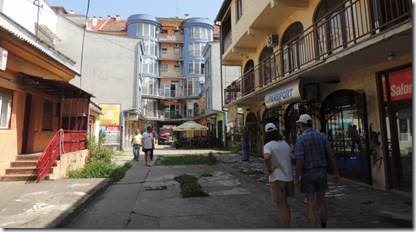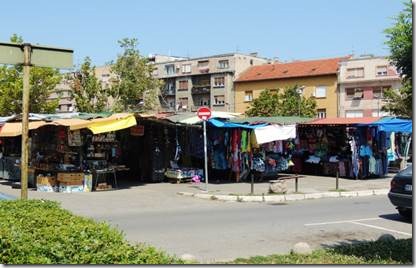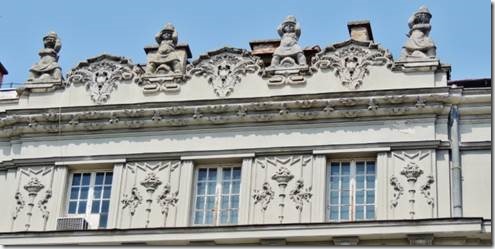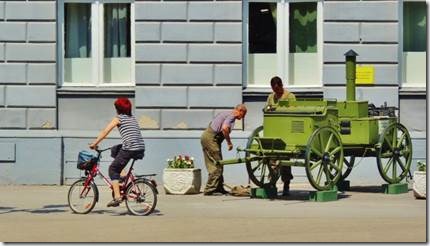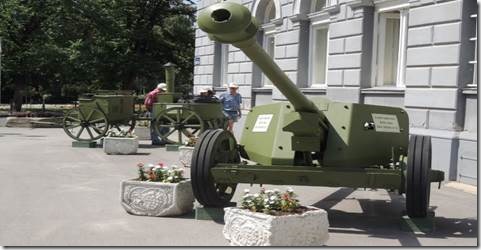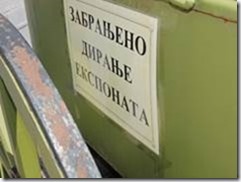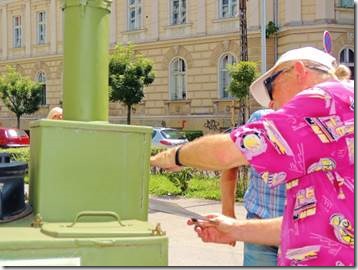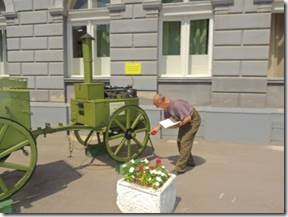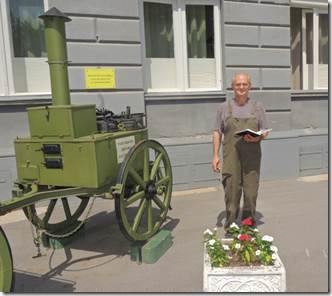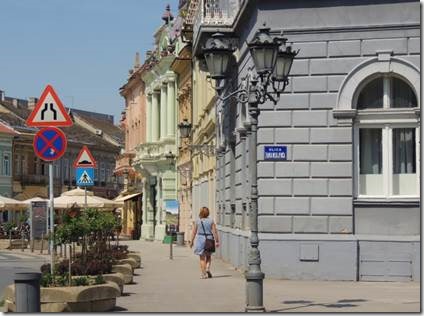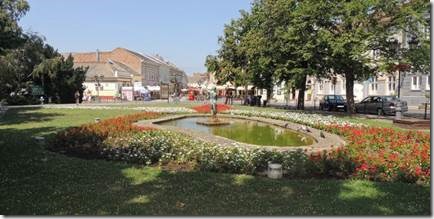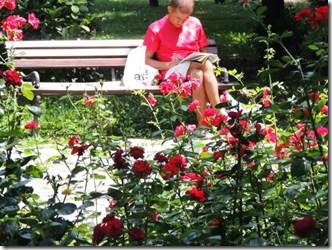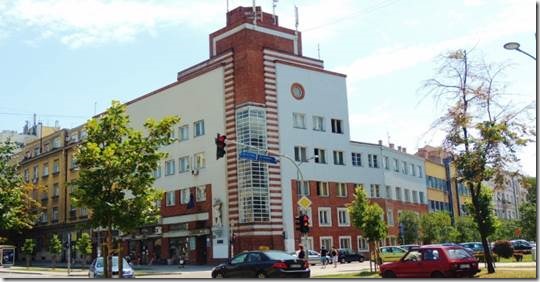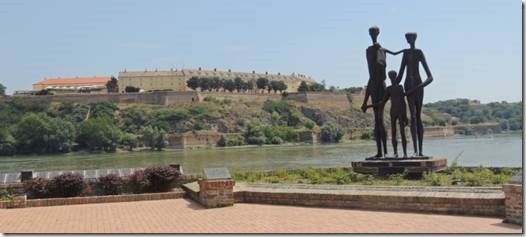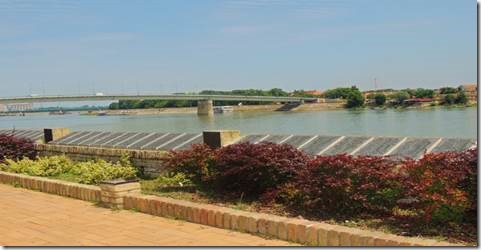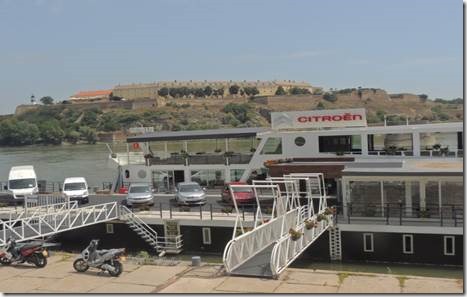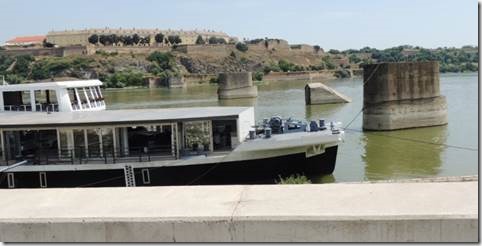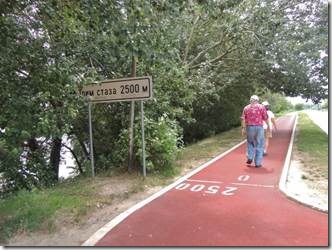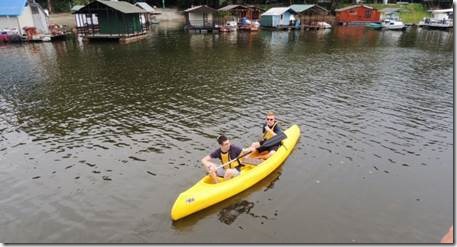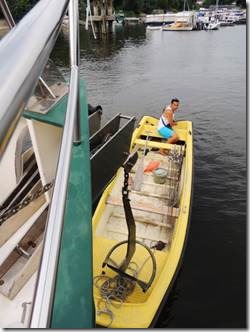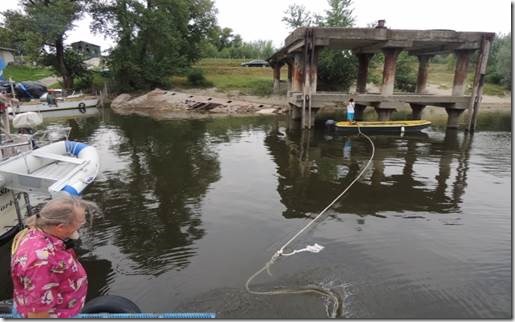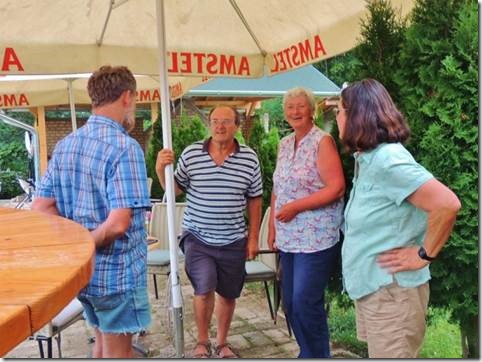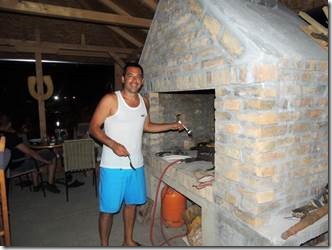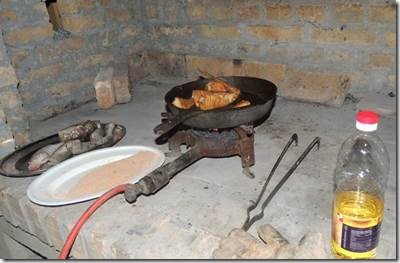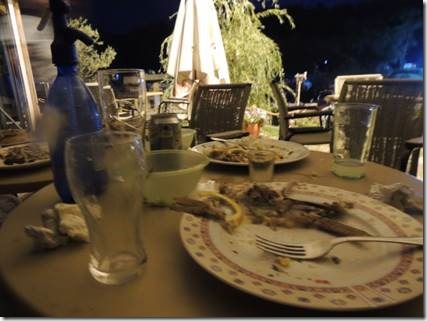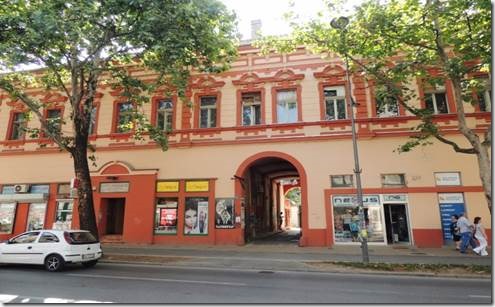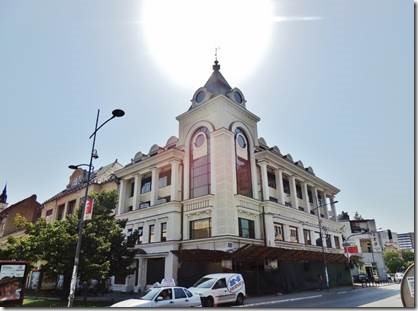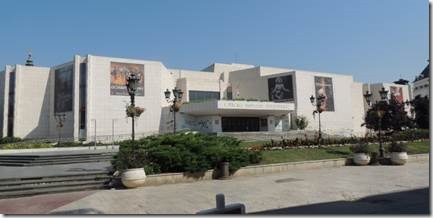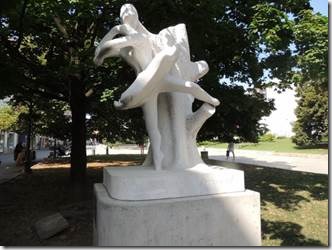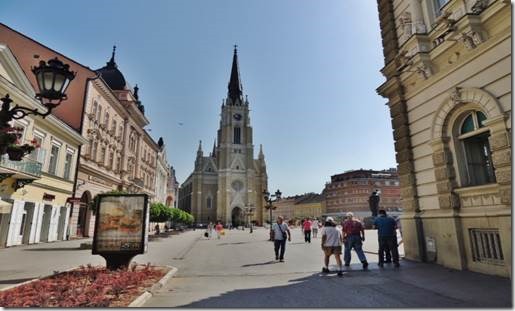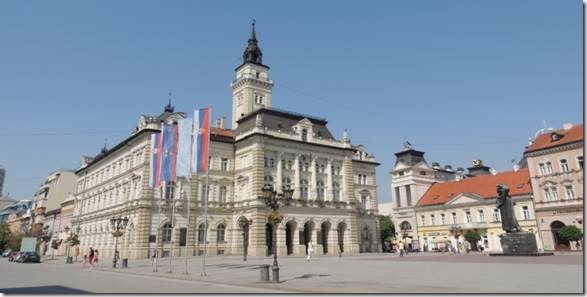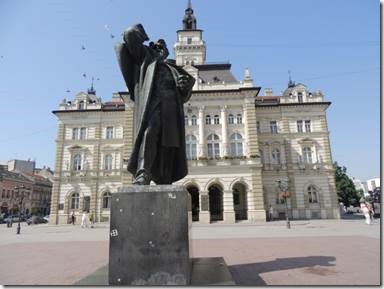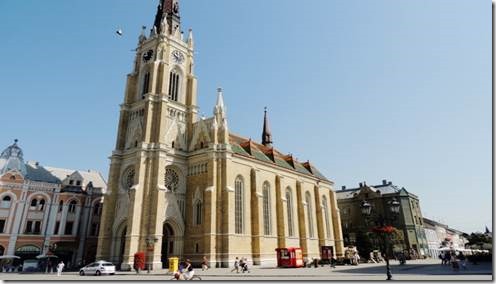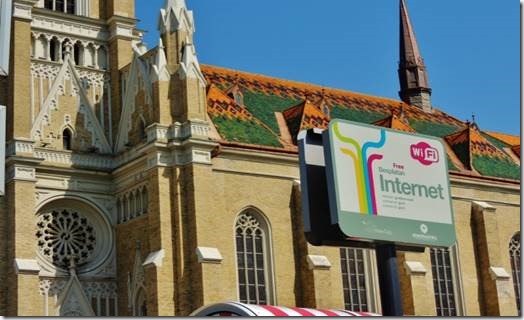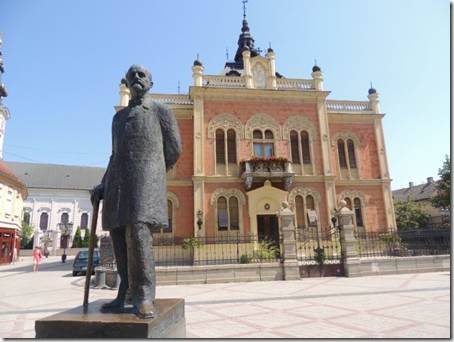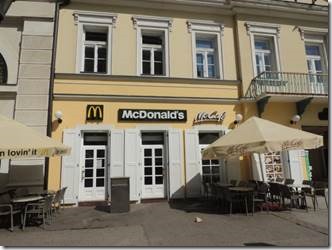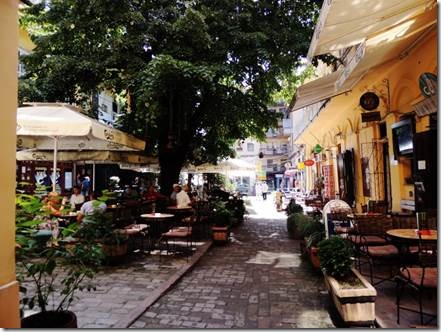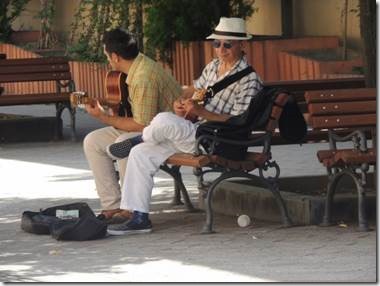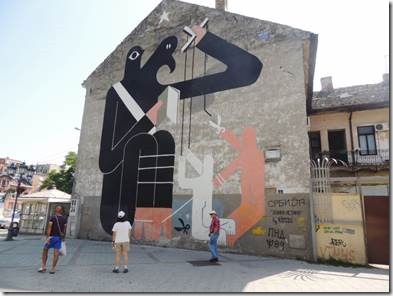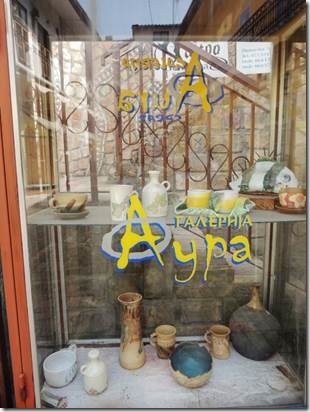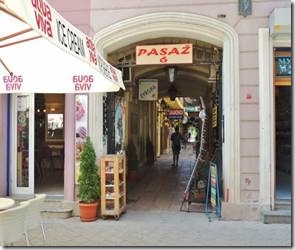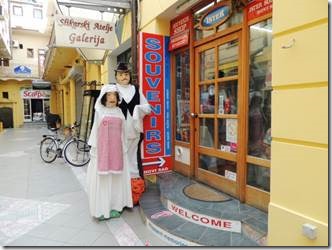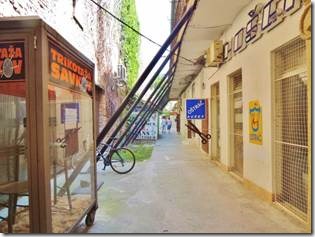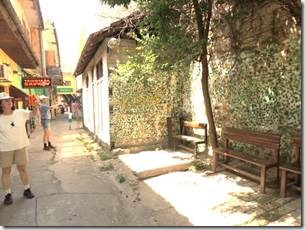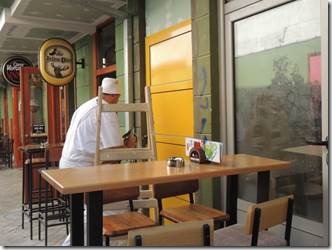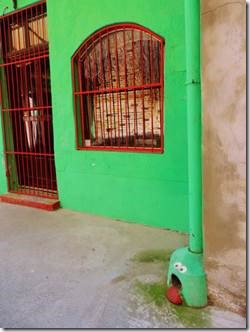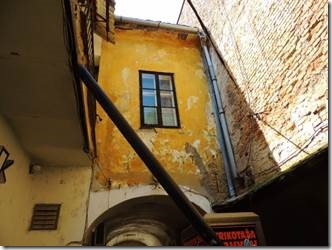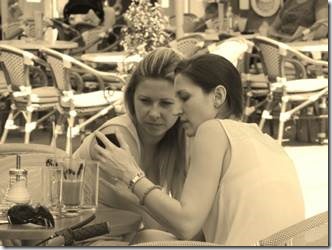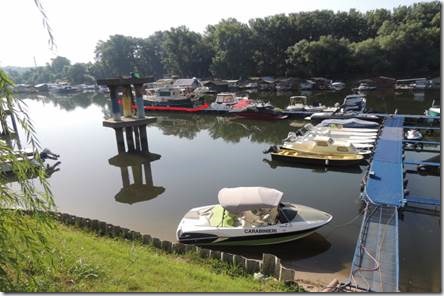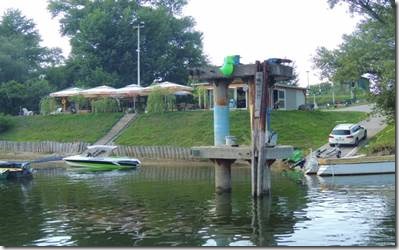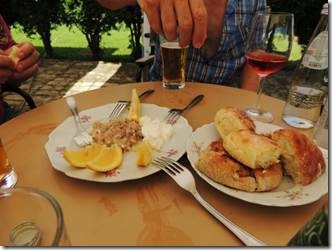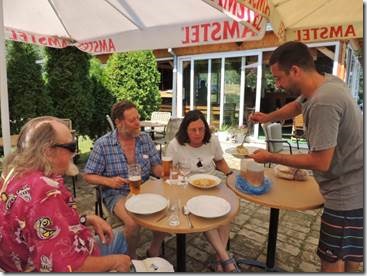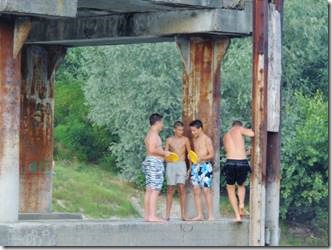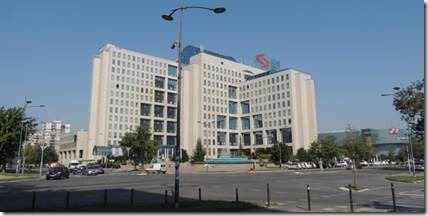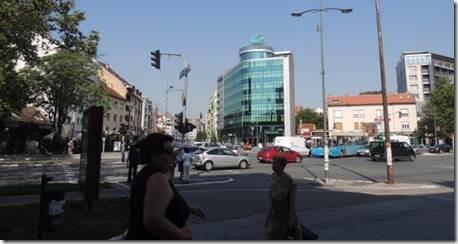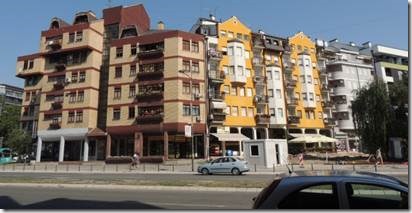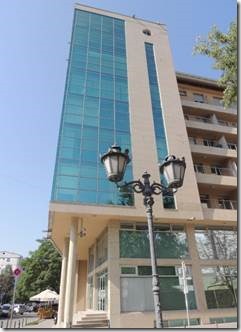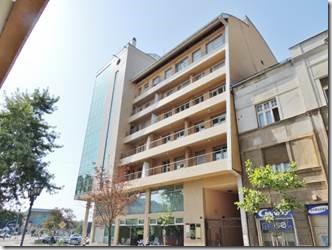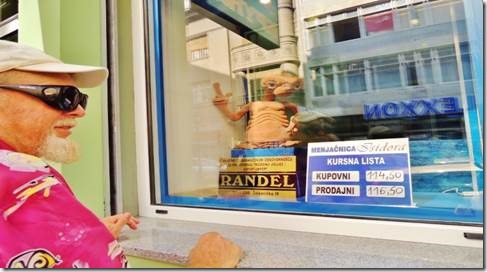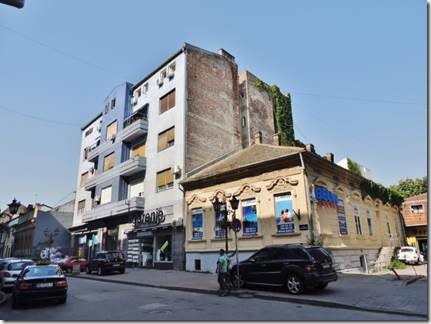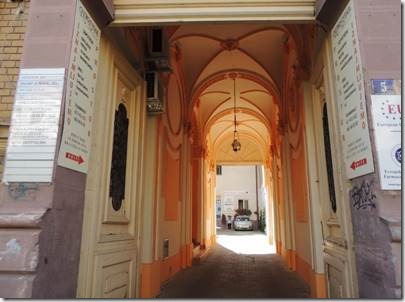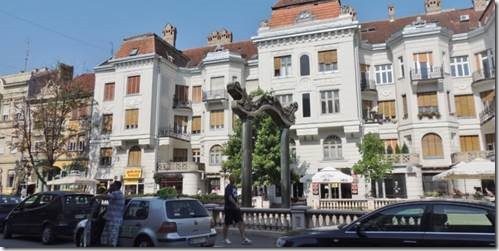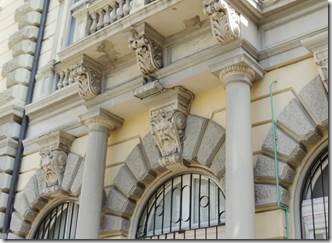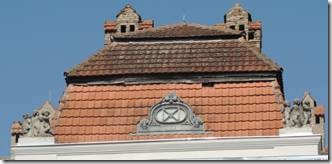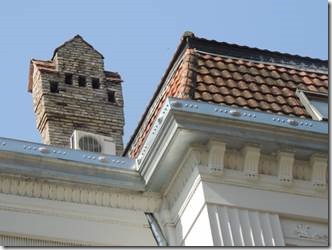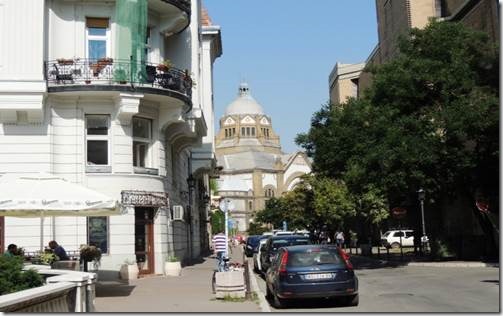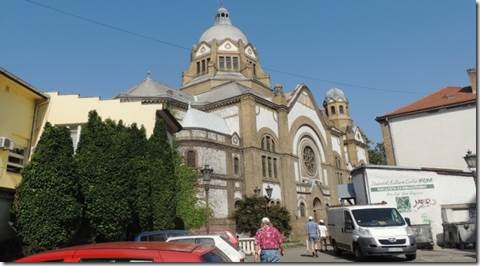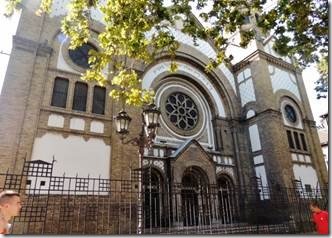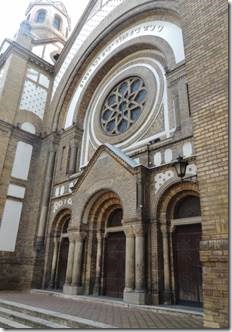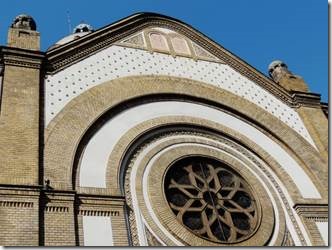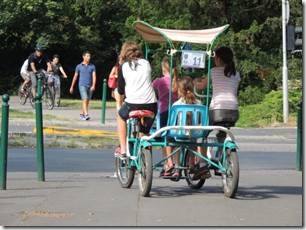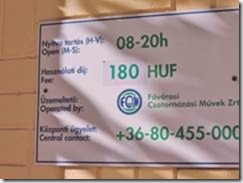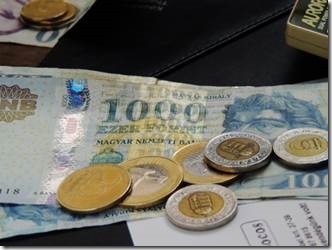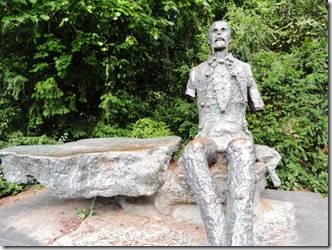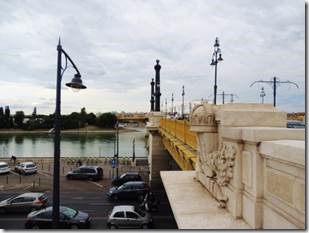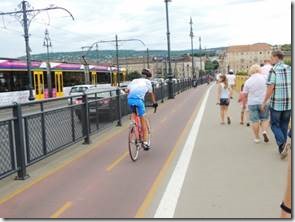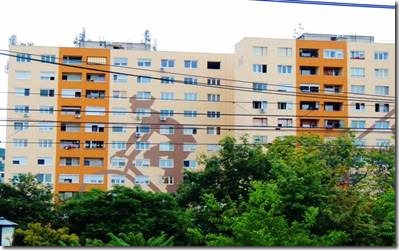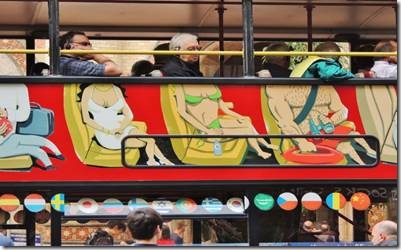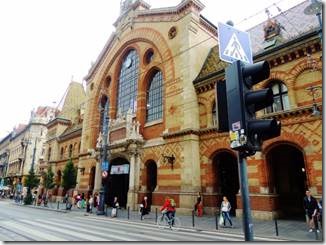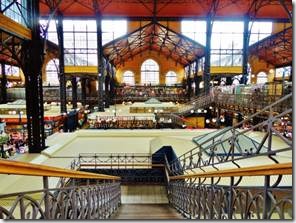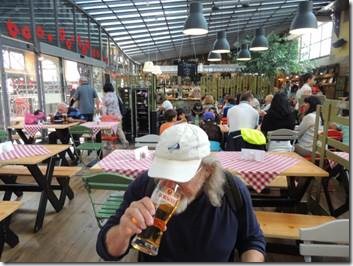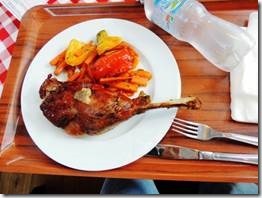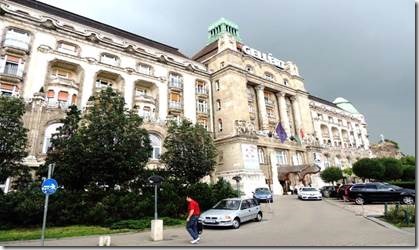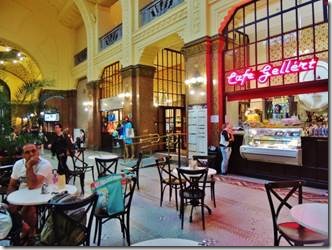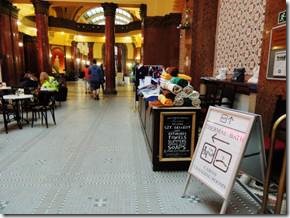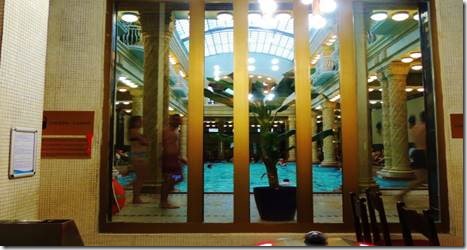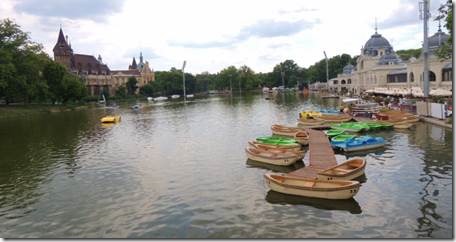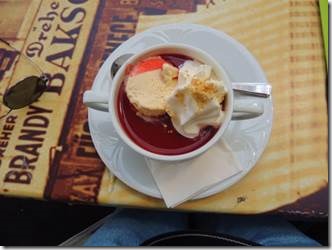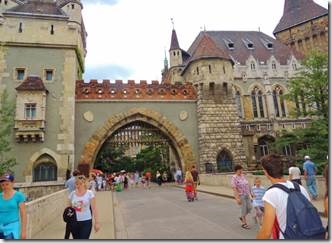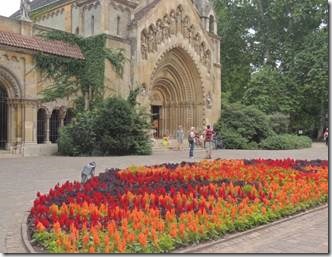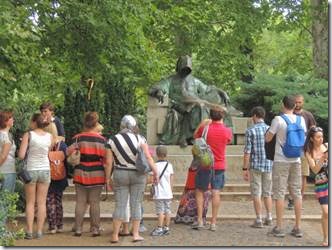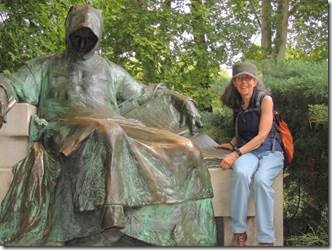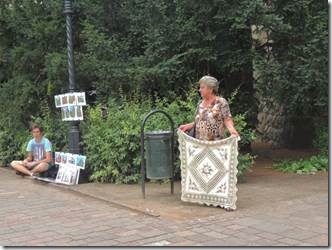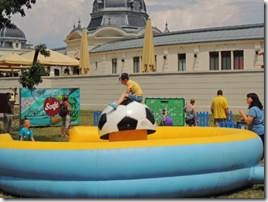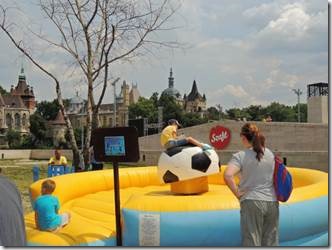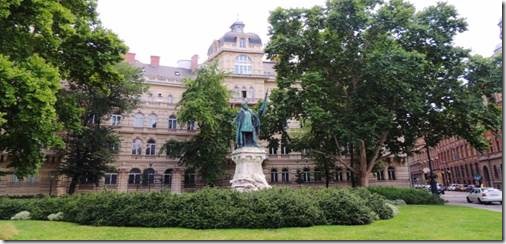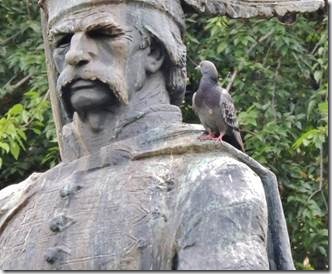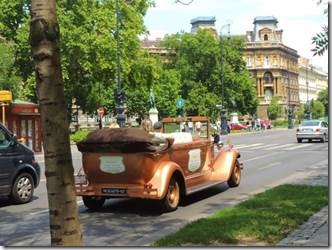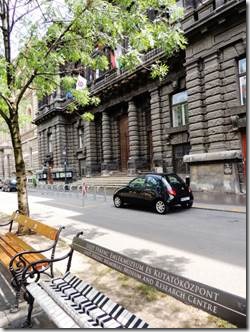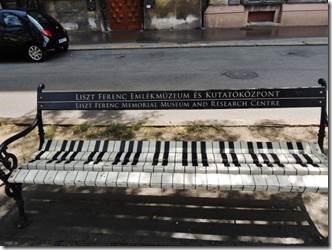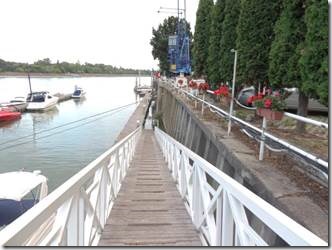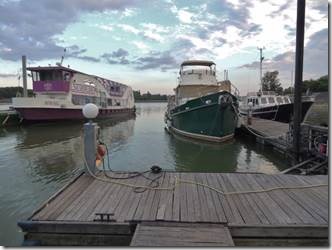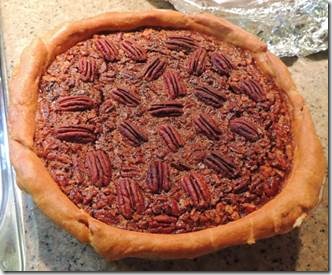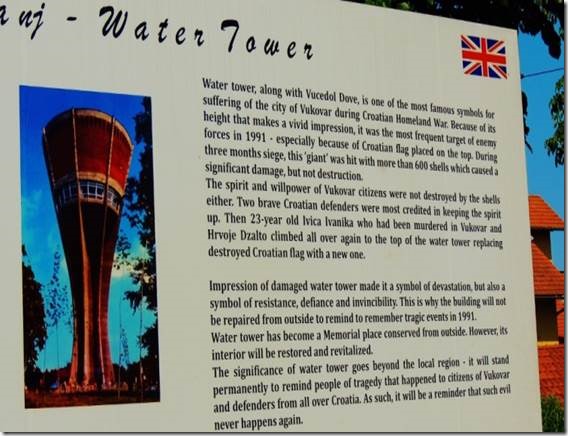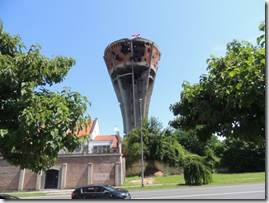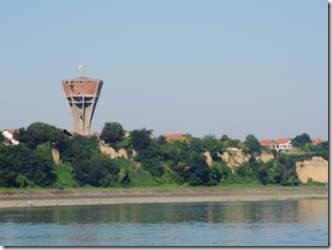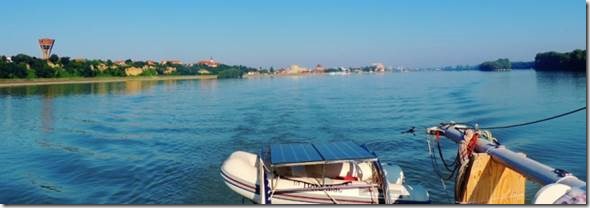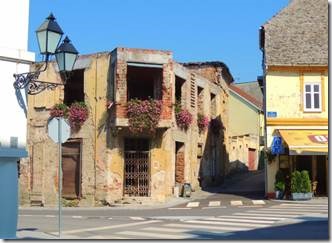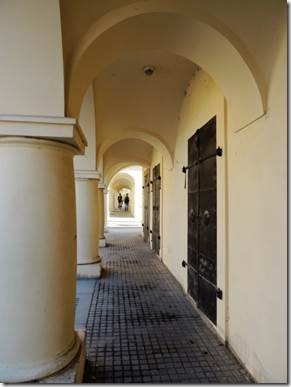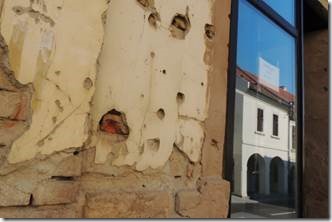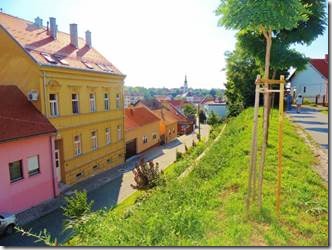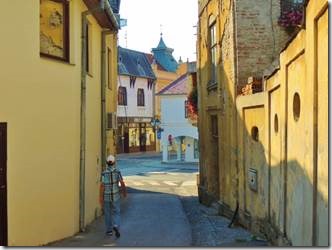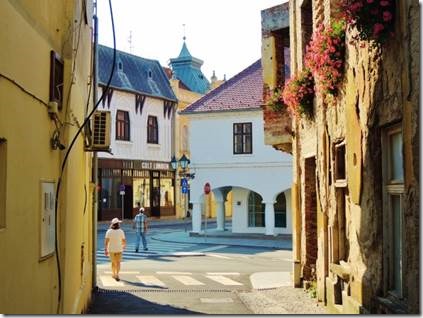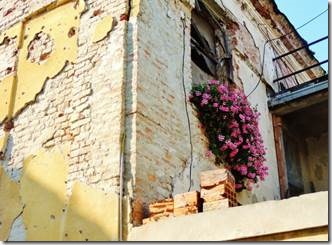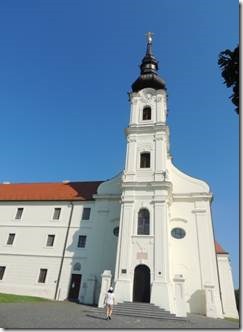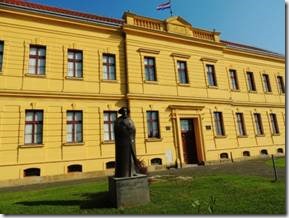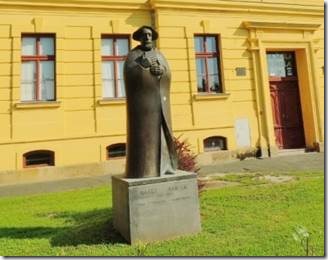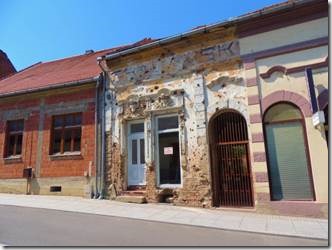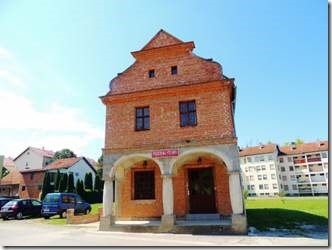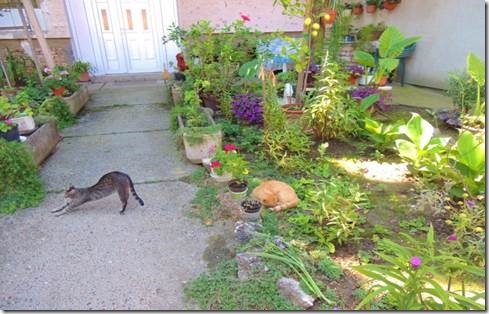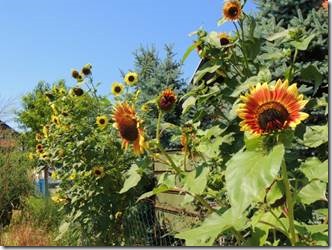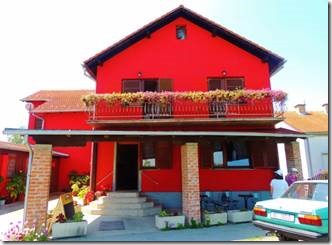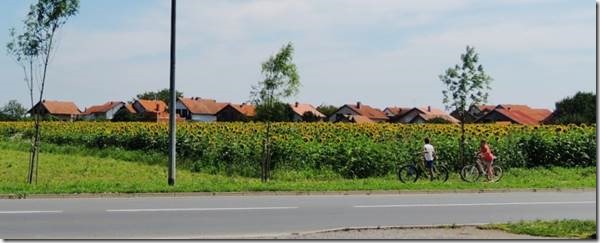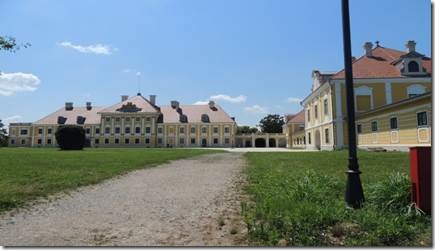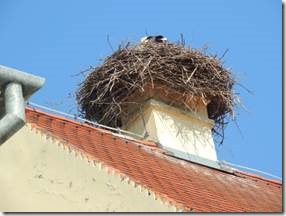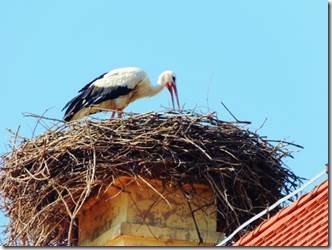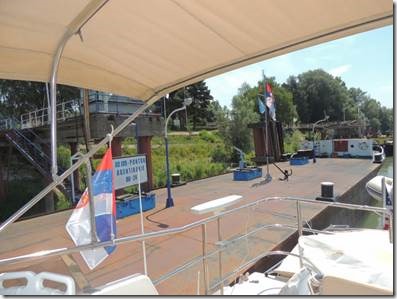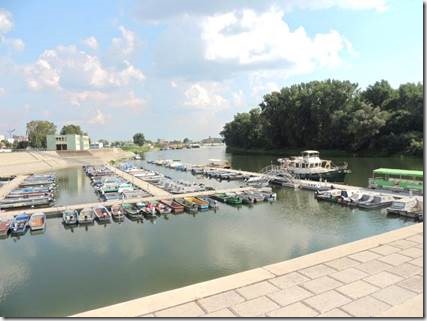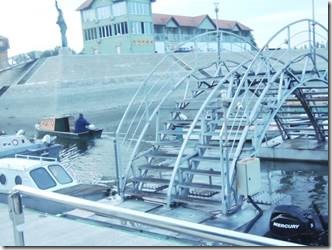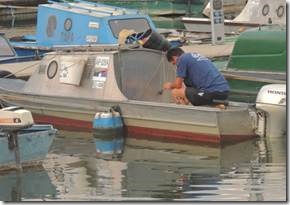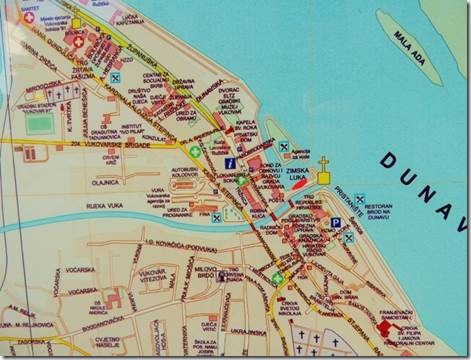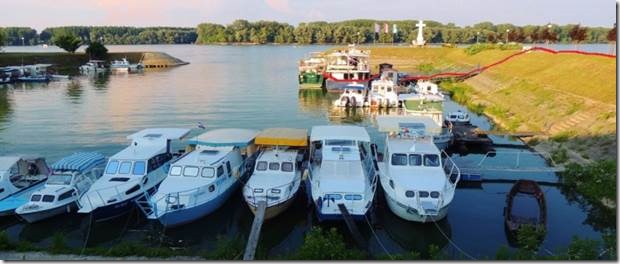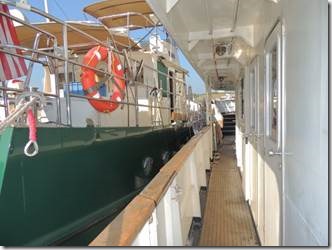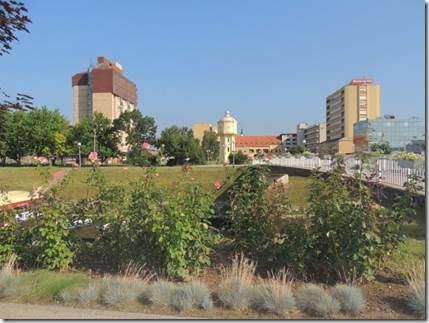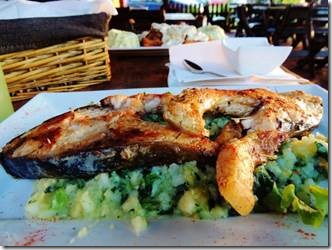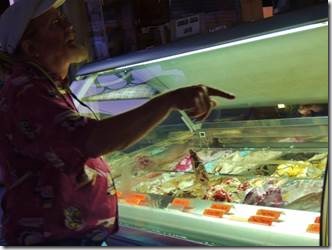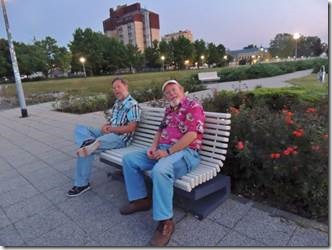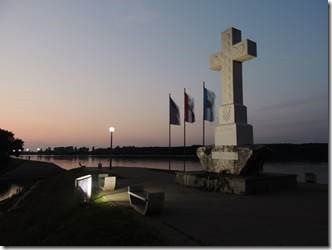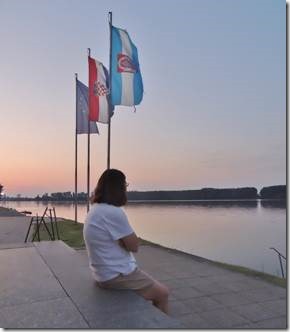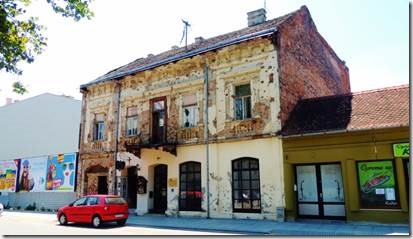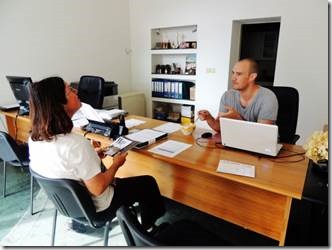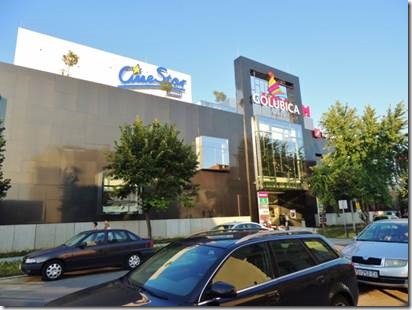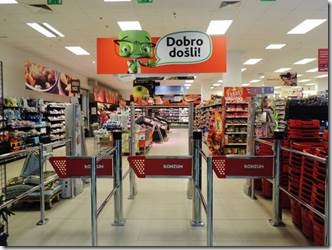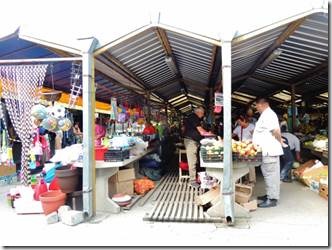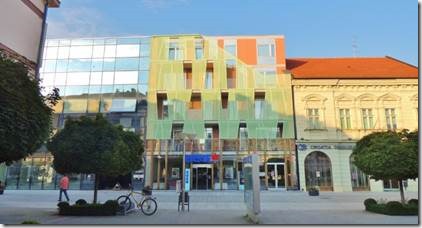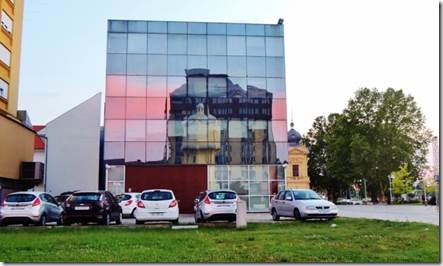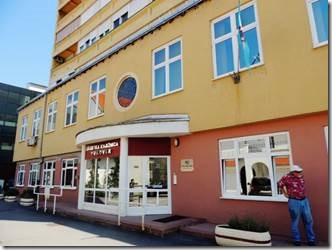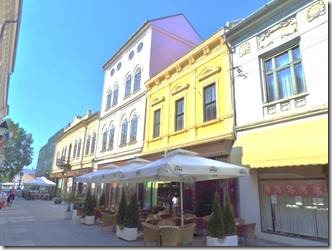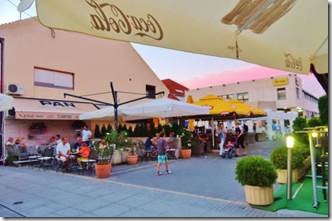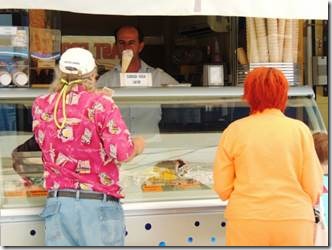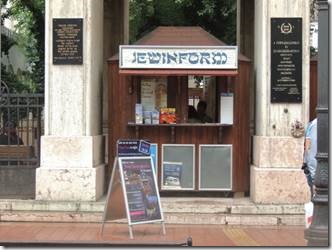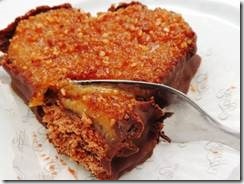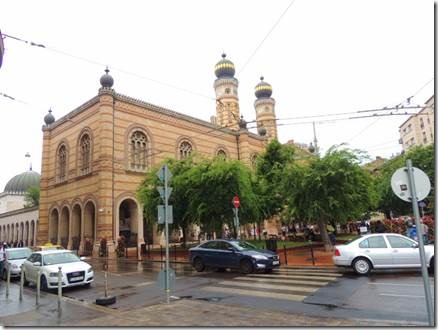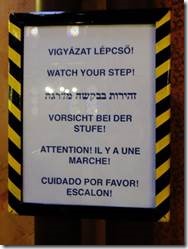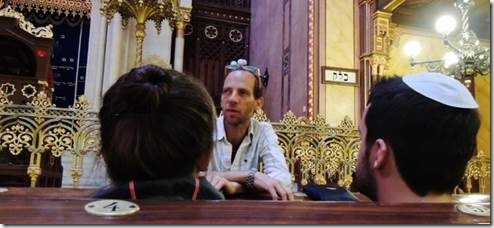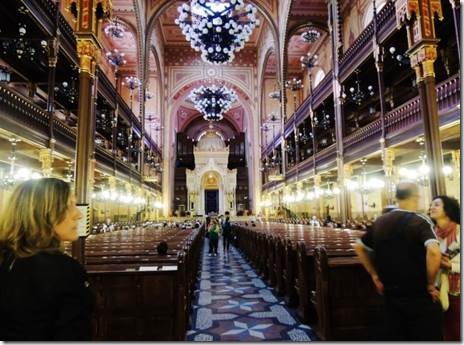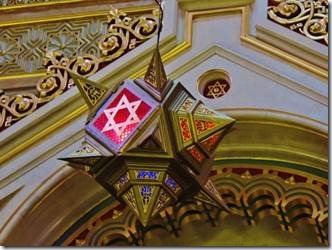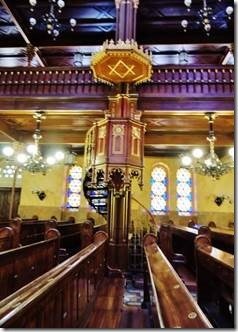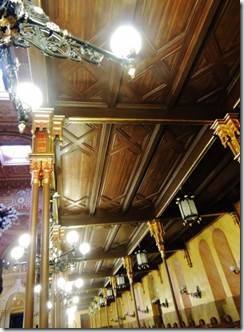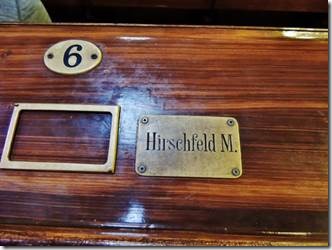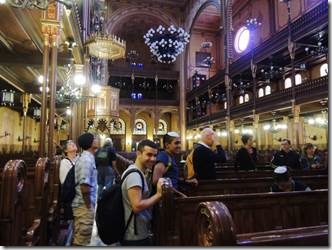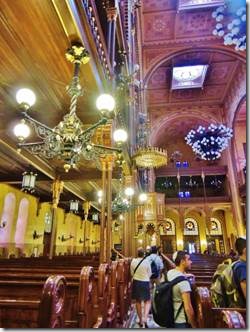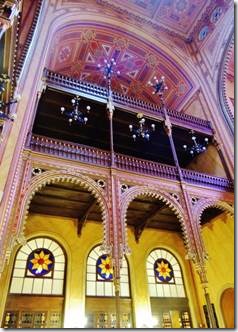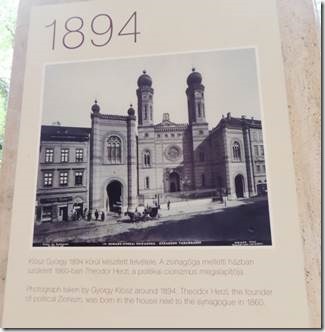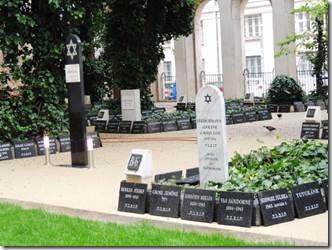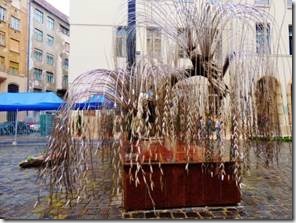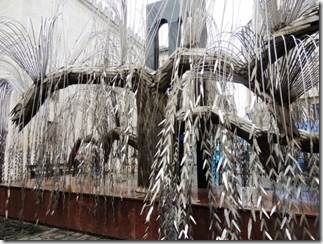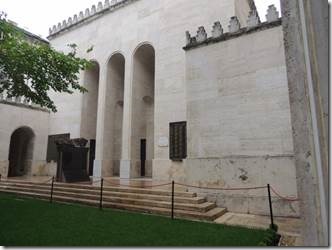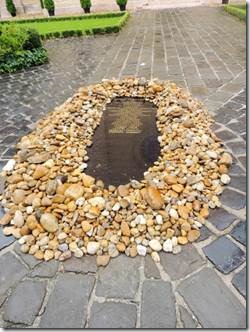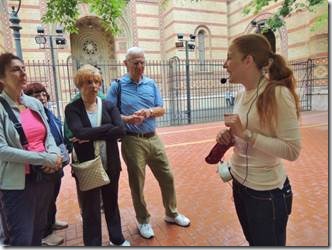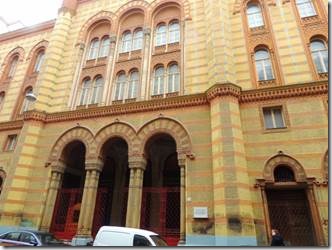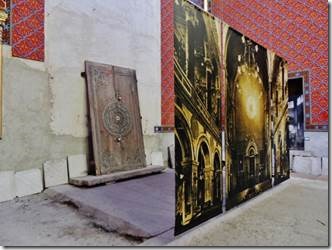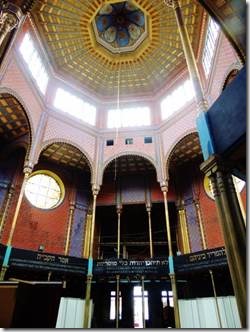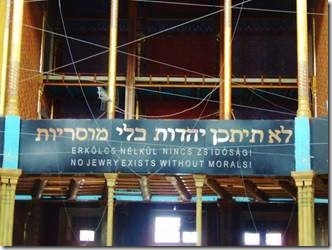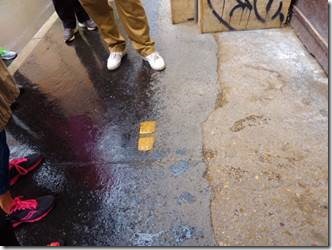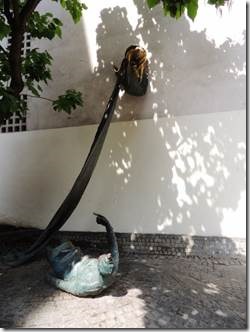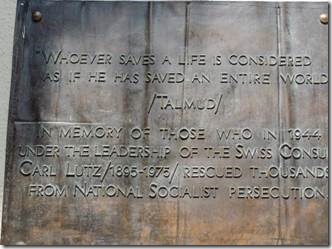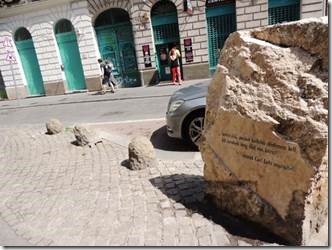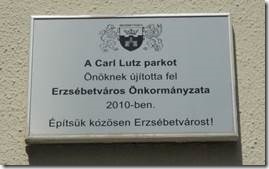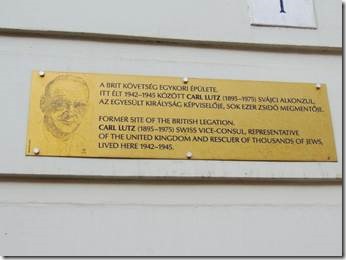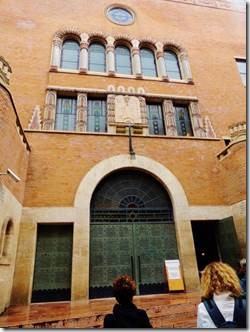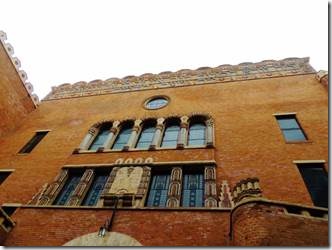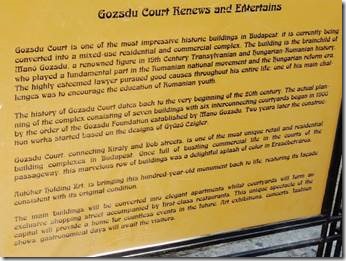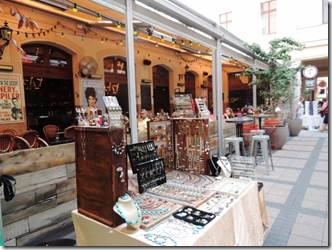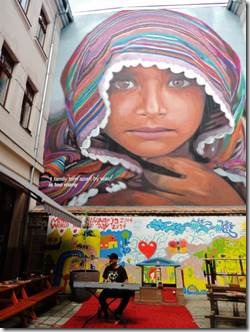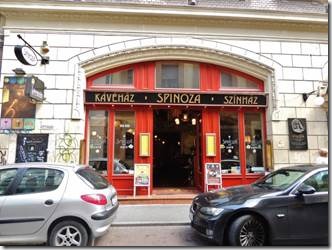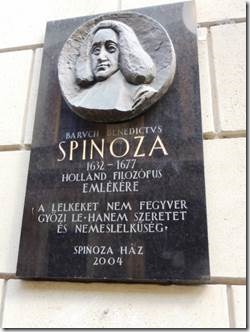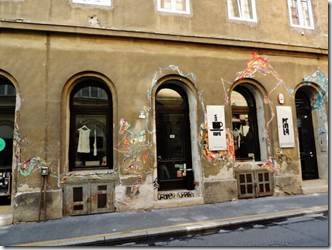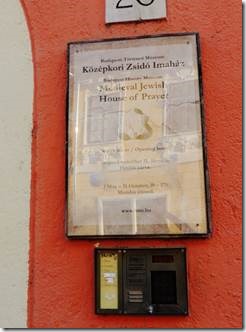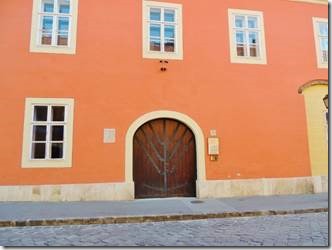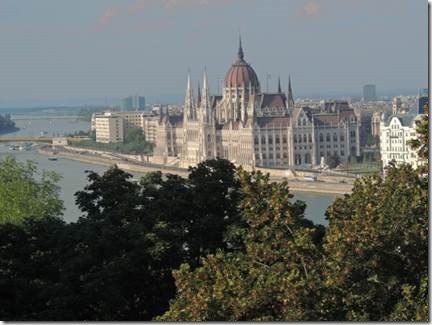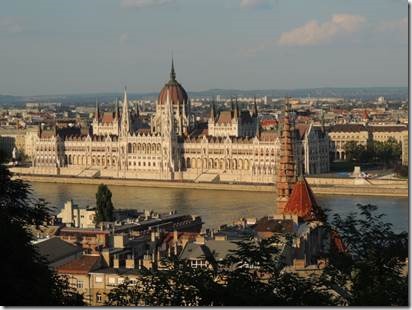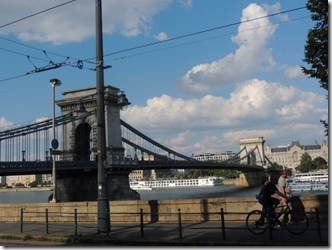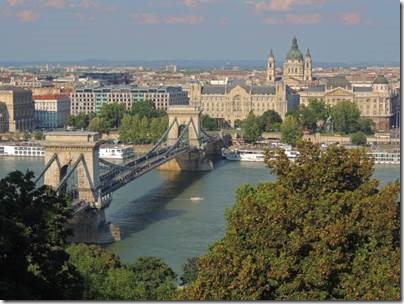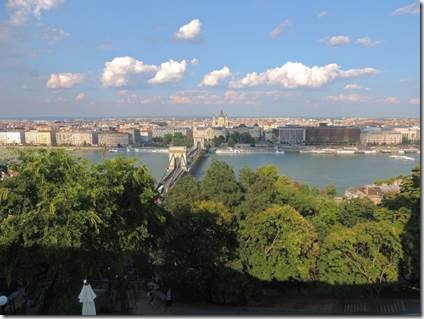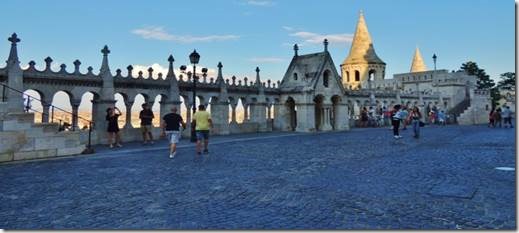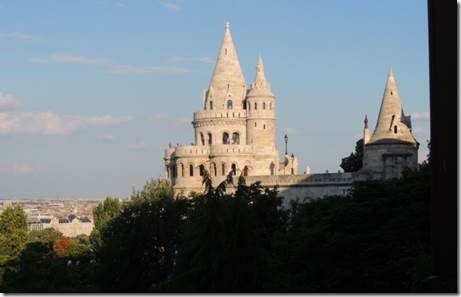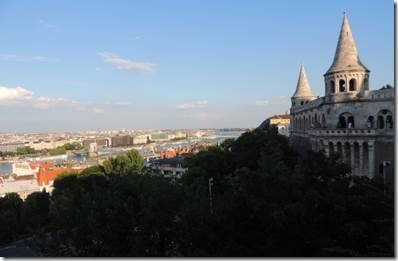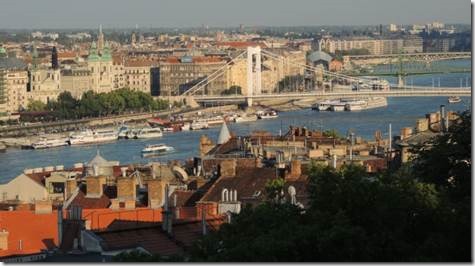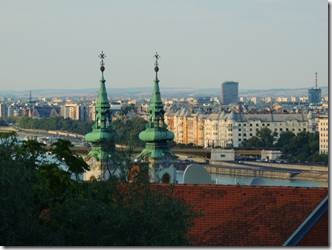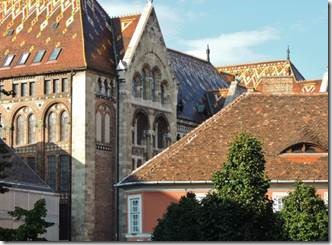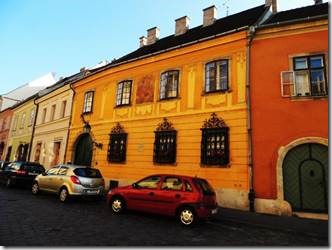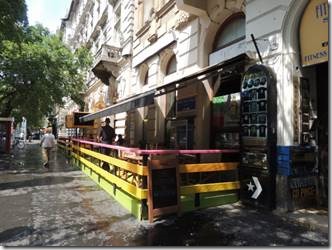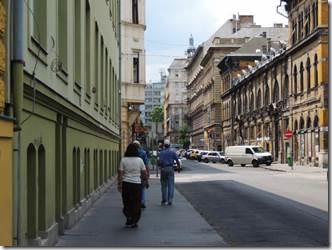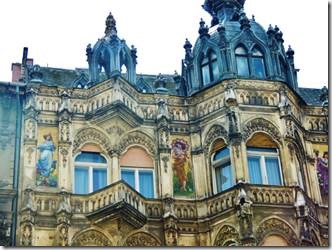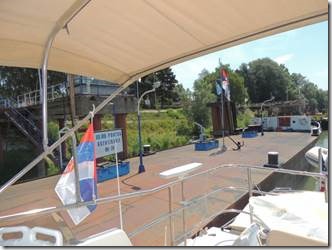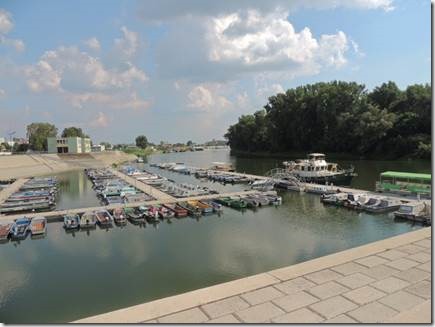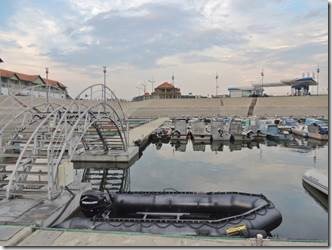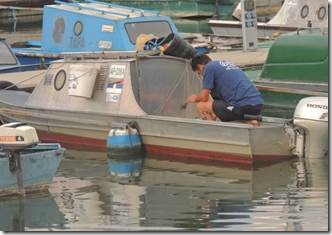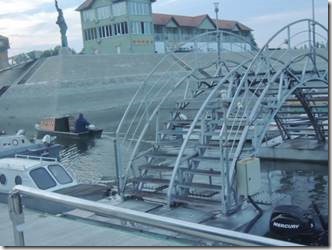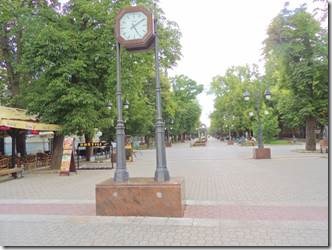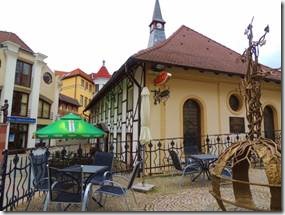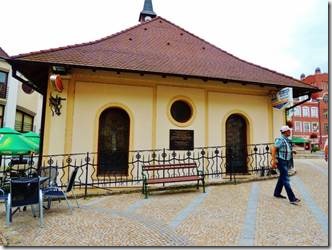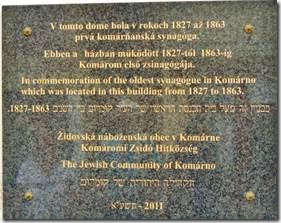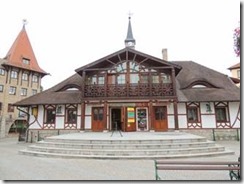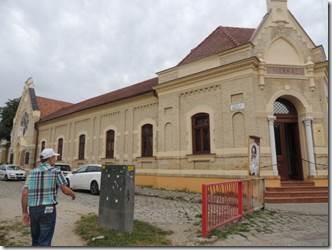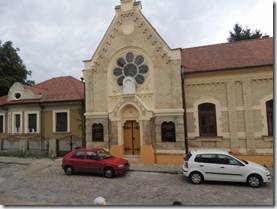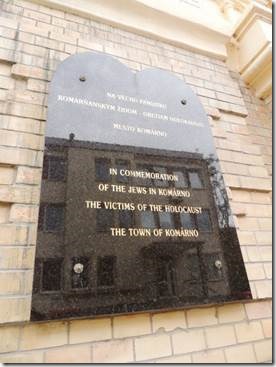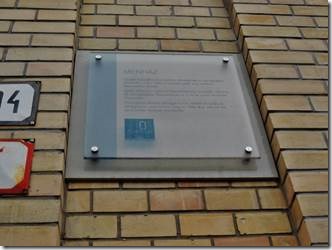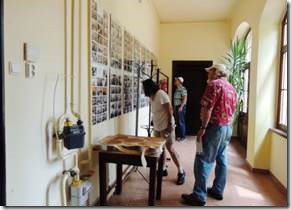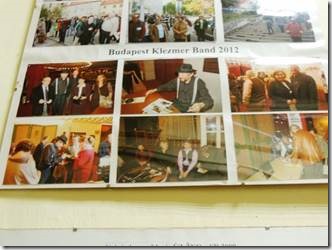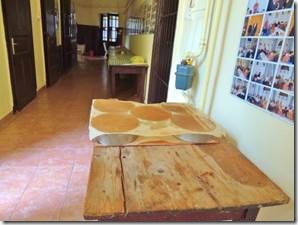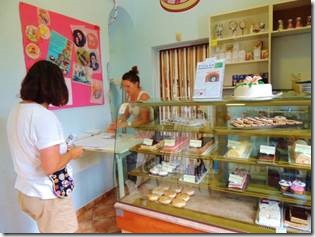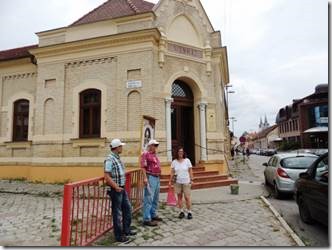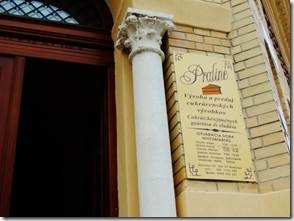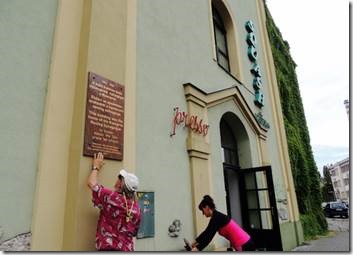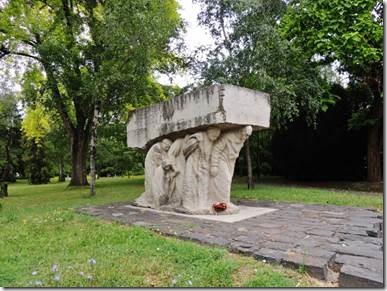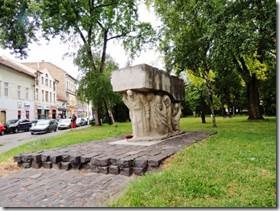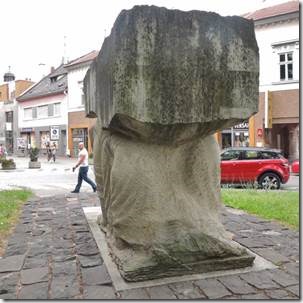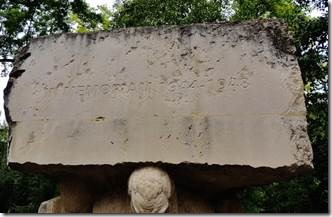Vidin, Bulgaria
Ru
|
We took this side road and found the open air market It was very hot and we had a fairly long walk back to the boat so no one was in shopping mode |
|
The two outer statuettes with their heads turned to profile were holding their hats with one hand; the middle ones held theirs with two hands. |
|
Yet another woman with “European Red” hair R R and M were more fascinated with the old battlefield equipment. |
|
The sign was no help; hopefully it didn’t say, “Do Not Touch.” Randal and Rick were exploring what is a battlefield transportable stove with a very small oven box. This man came out to measure and write in his notebook, but didn’t speak English. |
|
I think we’re looking down Dunavska Street. “Dunavska Street is probably the oldest street in Novi Sad. It consists of three parts: from the direction of Zmaj Jovina streets are one-floor houses on the left and right, whose ground floor premises are used for various stores, the second part is the Danube park on one side and command of the garrison, the Museum of Vojvodina and the Historical Museum, on the other side, while in the third part, near the Danube river, is a House of the officers. On the left side of the street are houses in neo-baroque style.” |
|
A lovely, shady city park “On the other side of the street, opposite the Museum of Vojvodina, there is Dunavski Park (Danube Park), the most beautifully laid out park in Novi Sad. It was built in 1895 on the once swampy land of a Danube inlet. Over an area of 34,000 m2, some 250 different species of flowers and trees have been planted. The central section of the park is occupied by a lake with a small island in the middle called Eržebet (Hungarian Erzsébet) which is dedicated to Austrian Countess Erzsébet Báthory, in whose memory a willow tree was planted there. The swans Isa and Bisa, as well as several ducks, proudly strut around the lake. At the entrance to the park there is the Girl with the Horn of Plenty fountain which is a 1912 work of the first educated Serbian sculptor Đorđe Jovanović. “ See, people still read paper text. |
|
And interesting building just across from the river. |
|
A Memorial to Serbs, Jewish and Christian shot and dumped into the frozen Danube and the old Fortress across the Danube. “On Jan. 21–23, 1942, a small rebellion near Novi Sad served as a pretext for the so-called "razzia," when total curfew was ordered and Jewish homes were searched and plundered while their occupants were murdered in the streets. On January 23 more than 1,400 Jews were marched to the Danube and lined up in four rows. The ice in the frozen river was broken and throughout the day Jews, including women and children, were shot in the back, disappearing in the waters, which carried corpses down to Belgrade and beyond for weeks. Among the victims were also some 400–500 Serbs. The "razzia" caused an upheaval even in Hungarian circles, and cabled orders arrived from Budapest to stop the massacre on the evening of January 23. Several hundred survivors, half frozen and frightened to death, were released.” http://www.jewishvirtuallibrary.org/ “Translated from Serbian Cyrillic "In Novi Sad on 21st, 22nd, and 23rd in January 1942, The Hungarian Military with helpers killed more than 1,300 innocent woman, children, men and elders. "Eternal honor to the victims of the raid." More than 1,300 names are recorded on the tablets, but more than 4,000 were killed.” http://sites-of-memory.de/ A list of victims’ names and a rebuilt NATO-bombed bridge. “This is a list of the victims that were recorded. To the left of the star are the Jewish victims and to the left of the cross are the Christian victims. In the background we can see a bridge called "Rainbow" that was built after the NATO bombing in 1999. The blank tablet represents the victims that were never found. “ http://sites-of-memory.de/ Jelena Kon established the Humanitarian Society “Bread Crust” (Kora hleba) and children’s day care and counselling during the severe economic crisis of 1925. In order to collect donations she organised numerous concerts which featured, among others, Bronislaw Huberman and Arthur Rubinstein. During the terrible Hungarian occupation and the infamous raid of 1942, she was arrested as a Jewess, tortured, murdered and thrown into the River Danube. Her place of spiritual stimulation was the Synagogue. http://www.serbia.com/ Jelena Kon was one of the people mentioned in the Serbian language brochure. I was able to find this info about her on a site dedicated to important Serbian women. |
|
A floating Citron car dealership and the Petrovaradin Fortress on the far bank. |
|
The remains of Franz Joseph Bridge left from WW 2. The retreating Yugoslavian Army destroyed the bridte, the Germans rebuilt it in 1942 and destroyed in again in 1944 before the liberation of Novi Sad. Bridges can have almost as much emotional impact as geographical and economic. Trying to Heal Old Hatred in Ruins on Danube By DONALD G. McNEIL Jr. Published: November 6, 1999 “In Novi Sad, Yugoslavia, three more Danube bridges lie in ruins. All were bombed by NATO in the spring to cut Belgrade’s links with its northern provinces. A hastily erected orange pontoon bridge has restored land traffic, but the ruins in the river are causing a crisis, cutting off barge traffic and threatening to flood the lowlands if an ice dam forms on the wreckage this winter.” “Petrovaradin Fortress, (Across the Danube) which has long been known as the Gibraltar of the Danube, is perched on the right bank of the Danube river overlooking Novi Sad. It was built between 1692 and 1780 based on the system of fortification construction developed by Sébastian Le Pestre de Vauban’s, later known as the Marquis de Vauban. The fortress was erected during the reigns of the Austrian rulers Leopold I, Joseph I, Charles VI, Maria Theresa and Joseph II From 1702, a post of the Danube Military Frontier was located in the fortress. The fortress is nestled on a river meander, on top of a promontory of diorite rock, and has a dominant geographical and strategic location in the region because of which many nations have fought for it over the centuries. Here there are traces of human inhabitation dating as far back as the late Stone Age, with the Celts, Romans, Huns, Avars, Byzantines, Hungarians, Serbs and Turks also settling in this area over the years. The Turks were driven out in 1687 by the Austrians who began building the current fortress five years later. In Latin, petra means cliff, var is Hungarian for city, while in Turkish din means faith. Joining these words creates Petrovaradin which the local people have literally interpreted to mean “city on the rock that is strong as faith.” http://www.turizamns.rs/en/node/972 |
|
A walking/jogging path followed river. Next to it was a separate bike trail. Along the river were beach clubs that charged an entrance fee. We walked from town all the way back to DoraMac on this path; just about 0 on the other end. |
|
Hello from Charlottesville The young man in the back of the kayac grew up in Charlottesville where his dad worked for UVA. His mom was born in Novi Sad, his dad the US. He was fluent in both languages. When he saw our flag he wanted to come say hello. |
|
Moving our anchor further to add security. We don’t normally have to anchor as well as tie up, but it was a small dock so the anchor was necessary. George was concerned that an evening storm might bring winds so had us move our anchor further out. George also added another line to the “kids diving platform” which he promised to remove later that night as we were leaving early in the morning with no way to untie our line. George must have forgotten as the line was still there in the morning. The security guard and Mary managed to get the job done so it was really not a problem. |
|
Meeting up with old friends Ernst, whom we’d met our first night in Deggendorf, Germany was now cruising to the Black Sea and would spend the summer in Greece. His wife Erika we met for the first time. |
|
Fish for dinner We’d all ordered fish for dinner. George caught it, cooked it and served it. The fish was tasty and the coating perfect. I asked George where he’d learned to cook. He smiled and said, “I get one recipe from the mothers of the women I date.” The marina is a work in progress but just with this gas burner and frying pan George fried up lots of fish. Apparently Serbian law courts are closed down for July and August other than for very unavoidable cases, so George has the summer to build his marinas. That about sums it up! Yachting Club Novi Sad is the actual name for George’s Place |

